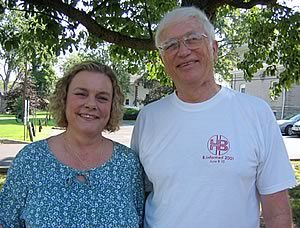 HBF is pleased to connect our blog readers to Christine Kukka’s monthly HBV Journal Review that she writes for the HBV Advocate. The journal presents the
latest in hepatitis B research, treatment, and prevention from recent academic and medical journals. This month, the following topics are explored:
HBF is pleased to connect our blog readers to Christine Kukka’s monthly HBV Journal Review that she writes for the HBV Advocate. The journal presents the
latest in hepatitis B research, treatment, and prevention from recent academic and medical journals. This month, the following topics are explored:
- Chronic Hepatitis B Remains Public Health Challenge in U.S.
- Epidemiologists Become Molecular Detectives to Investigate HBV Outbreaks
- Telbivudine Effectively Prevents Infection of Newborns Born to Infected Mothers
- GGT Blood Test Reveals Fibrosis and Cirrhosis in Hepatitis B Patients
- Early Research Combining Antivirals with a Protein “De-activator” Shows Promise
- Diabetes Dramatically Increases Liver Cancer Risk in Cirrhotic Patients
- Tenofovir Linked to Higher Rates of Bone Loss than Entecavir
- Tenofovir Equally Effective against Hepatitis B in Asians and Non-Asians
- Liver Cancer Risk Factors Do Vary Between Racial Groups
- Even Liver Specialists Fail to Screen Chemotherapy Patients for Hepatitis B
- European Study Confirms Coffee Dramatically Lowers Liver Cancer Risk
HBV Journal Review
October 1, 2014
Volume 11, Issue 10
by Christine M. Kukka
Chronic Hepatitis B Remains Public Health Challenge in U.S.
A new U.S. Centers for Disease Control and Prevention report on hepatitis B prevalence finds that while new infections have declined markedly, treating chronic hepatitis B infection remains a public health challenge.
New hepatitis B virus (HBV) infections have plummeted since 1990 due to comprehensive immunizations. The CDC report estimates only 18,760 people were infected with HBV in 2012.
In 2012, the highest rates of new infections were among those aged 30–39 years (2.17 cases per 100,000 population), and the lowest were among children under age 19 who had been immunized at birth.
Many of the new infections were transmitted sexually or through injecting drug use.
However, an estimated 700,000 to 1.4 million U.S. residents are chronically infected. According to the report, Viral Hepatitis Surveillance United States, 2012, about half of those chronically infected were either born in Asia or were born to HBV-infected mothers in the United States.
In 2011, the death rate from chronic hepatitis B was 0.5 deaths per 100,000 population. The highest mortality rates were among people aged 55–64 years, Asian and Pacific Islander, and male.
“Identifying these chronically infected persons and linking them to care remains a challenge,” the authors reported.
Source: www.cdc.gov/hepatitis/Statistics/
2012Surveillance/
Epidemiologists Become Molecular Detectives to Investigate HBV Outbreaks
While new HBV infections have declined dramatically since the early 1990s due to effective immunizations, public health officials continue to examine where new infections are coming from and who is getting infected.
Read the HBV Journal Review in its entirety here.










